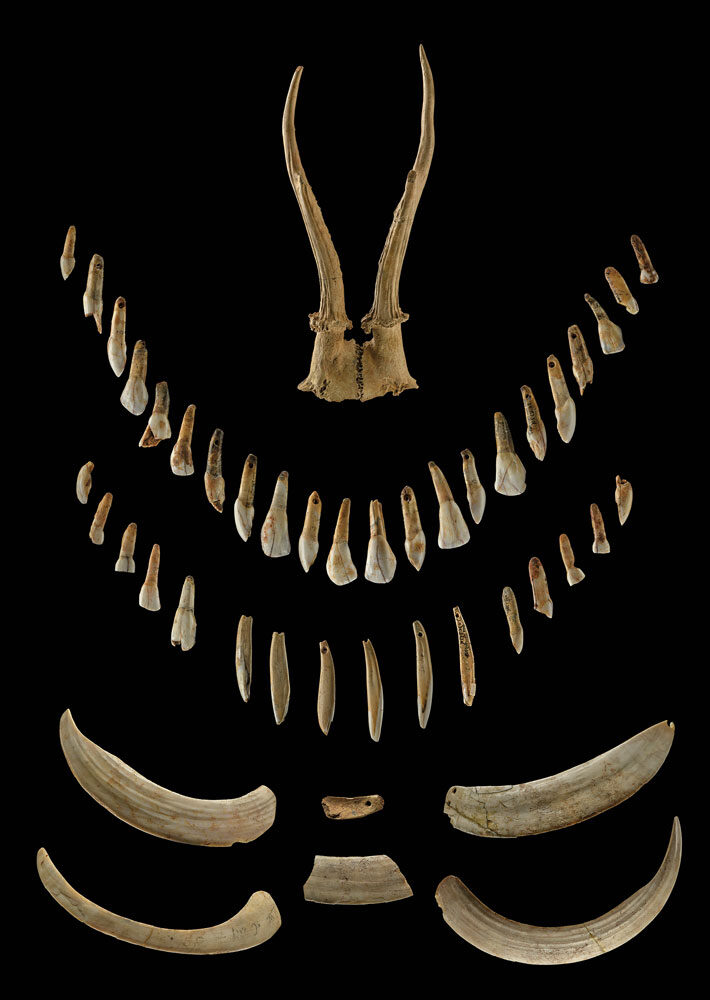
Given just a few hours to work before the trench had to be filled in, Henning salvaged what he could, pulling human bones from the earth and trying to recover as many as possible. A rough sketch made during the dig, now in the archives of the State Museum of Prehistory in Halle, shows a skeleton placed as if seated in a shallow pit, along with the approximate location and outlines of the original ditch.
Among the finds that emerged from the grave that afternoon was a second, tiny skull belonging to an infant of less than a year old, found between the thighs of the adult burial. Other unusual items included the delicate antlers of a roe deer, still attached to part of the skull, that could have been worn as a headdress. Henning also unearthed a polished stone ax similar to a type known from other sites in the area and 31 microliths, small flint blades barely an inch long. These artifacts led archaeologists to conclude that the grave belonged to a Neolithic farmer. Their opinion would later turn out to be entirely wrong — the first, but far from the last, time that archaeologists' interpretation of the skeleton's identity was mistaken.
The ideology of 1930s Germany helped shape scholars' initial interpretation of the grave. Discovered barely a year and a half after the Nazis took power, politics quickly became enmeshed in the skeleton's story. Archaeologists were a fundamental part of Adolf Hitler's nation-building program, which sought to locate physical evidence of the original Aryans, who the Nazis believed were blond-haired and blue-eyed and came from northern Europe. Hoping to support this idea, another archaeologist on the scene — who was a member of the Amt Rosenberg, a cultural policy and surveillance body within the Nazi party — proclaimed the grave that of an ur-Aryan based on the presence of the single stone ax and microliths. "The Nazis thought the burial belonged to a white man from the Neolithic," says Harald Meller, director of the State Museum of Prehistory, an erroneous and dangerous conclusion that was part of a larger campaign to prove that the German "race" had been in northern Europe for thousands of years.
Over the decades, generations of scholars would revisit the Bad Dürrenberg remains in the museum and advance new theories. In the 1950s, researchers reexamined the skeleton and, based on the shape of the pelvis and other bones, suggested that they belonged to a woman. The copious grave goods — in addition to the antler headdress, blades, mussel shells, and boar tusks there were hundreds of other artifacts, including boars' teeth, turtle shells, and bird bones — clearly marked the burial as special. The flints and other finds were firmly rooted in the world of Mesolithic hunter-gatherers who lived between 12,000 and 6,000 years ago, rather than the more agrarian Neolithic farmers in the following period. That dating, too, deepened the mystery. The few Mesolithic graves that had been unearthed in Europe contained a flint blade or two, at most. In comparison, the Bad Dürrenberg grave was uniquely rich for the period.
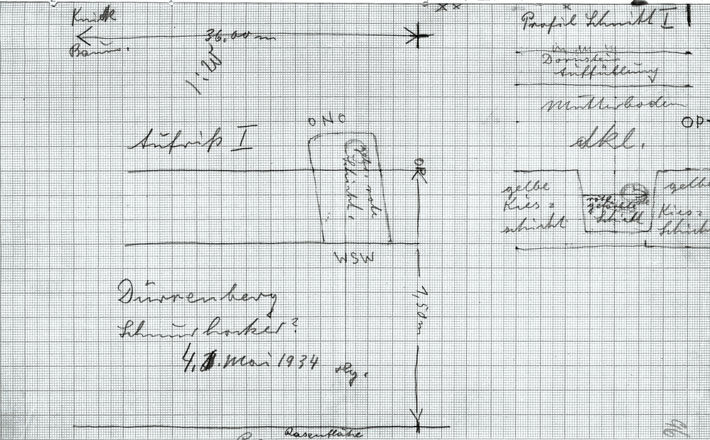
In the early 1990s, Jörg Orschiedt, an archaeologist and physical anthropologist at the State Office for Heritage Management and Archaeology Saxony-Anhalt, restudied the remains and affirmed that they belonged to a woman. He also noticed that her front teeth were worn down and that she had a small notch on one of her cervical vertebrae, which he identified as evidence of a malformed blood vessel. More than 20 years later, archaeologist Judith Grünberg of the State Office for Heritage Management and Archaeology Saxony-Anhalt, then a doctoral student working at the museum in Halle, went through the boxes of artifacts from the grave. She reexamined the boars' teeth and concluded that they had been drilled through so they could be attached to an animal skin, which, in combination with the antler headdress, led her to suggest that the grave belonged to a shaman. A few years later, the skeleton was put on display in the museum's permanent exhibition, identified as a female shaman from the Mesolithic period.

Meller's team was equipped with modern tools and techniques, and the luxury of time their predecessors had not enjoyed. They soon located the 1934 construction trench using the original sketch, which proved to be very precise. Next, they followed signs of disturbed soil to a spot where discoloration in the earth showed that the 1930s excavators had hollowed out a space wider than the trench before filling it back in. The team then removed the soil around the grave in two blocks — nearly six tons of soil and rock — and trucked them to a warehouse and lab facility in Halle.
Surrounded by tall steel shelves storing artifacts and remains from other graves in the region, they set about excavating the blocks. They worked slowly, sieving the soil from the original dig, and recovered hundreds of additional artifacts. The new finds included dozens more microliths, and additional bird, mammal, and reptile bones. The team also found missing pieces of the woman's skeleton and more tiny bones belonging to the baby buried with her.
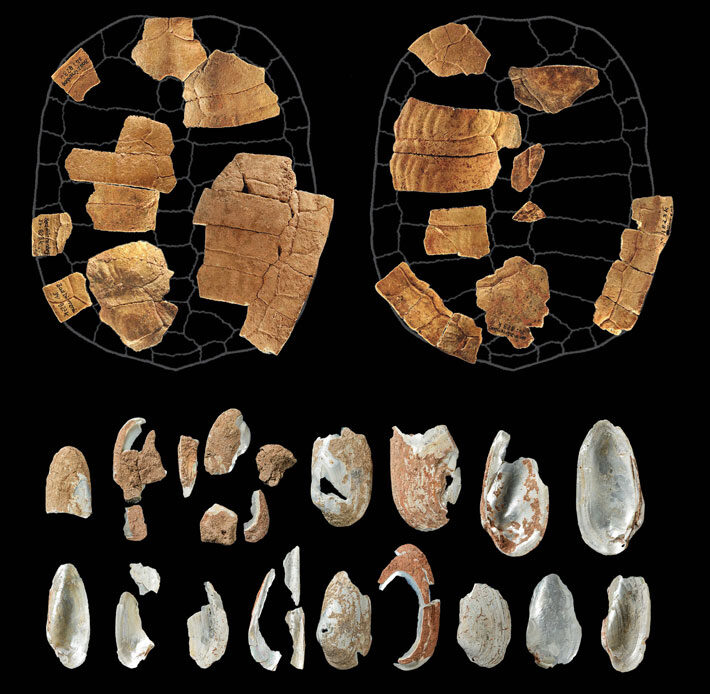
What came next looked very different. Mile-thick ice sheets melted, and dense forests and marshlands replaced icy, open tundra. The new landscape required entirely different survival strategies. "You can't move as easily," Meller says, "and it's harder to hunt." People adapted quickly, becoming less mobile and more specialized in response to the changing environment. For the first time, individuals developed particular skills as fishers, canoe-makers, or wood-carvers, enabling groups of people to make efficient use of local resources. In the absence of herds of mammoth and reindeer to hunt, such specialization let them wrest more fish and game out of rivers and forests while remaining in a smaller territory.
Meller believes that the Bad Dürrenberg burial is proof that human spirituality became more specialized at this time, too, with specific people in the community delegated to interact with the spirit world, often with the help of trances or psychoactive substances.
Comment: Perhaps the events of that period brought shamans back to the fore, but there's reason to believe they were an asset at times prior to this period: The Existence of Female Shamans: Solving the Mystery of a 35,000-Year-Old Statue
Combined with the earlier analysis of the woman's grave, the team's new finds and meticulous look at her bones painted a more complete picture of the shaman. They conjectured that, from an early age, she had been singled out as different from other members of her community. Even in death, her unusually rich grave marked her as exceptional. Earlier scholars, including Grünberg, had speculated that she was a shaman who served as an intermediary between her community and the spirit world, and Meller says that the new finds prove it beyond a doubt.
In her role as a shaman, the woman would have interceded with supernatural powers on behalf of the sick and injured or to ensure success in the hunt. "You travel in other worlds on behalf of your people with the help of your spirit animal," says Meller. Just as some people in the Mesolithic specialized in fishing or carving, the Bad Dürrenberg woman specialized in accessing the spirit world. "She must have had talents or skills that were highly esteemed in society," Jöris says.
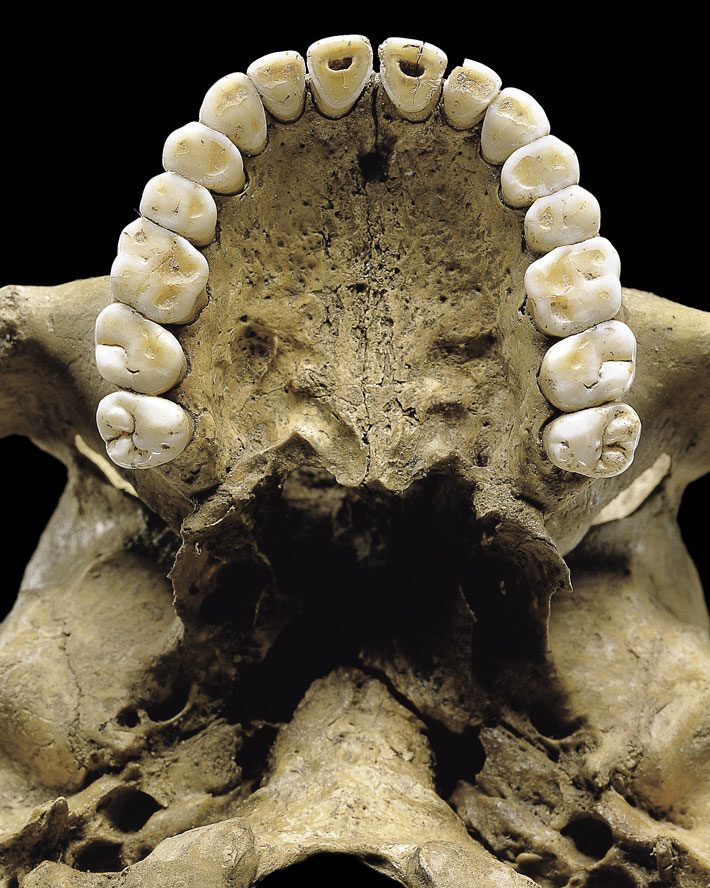
Bioarchaeological analysis of the woman's bones further helped researchers piece together how she lived. Compared with other known Mesolithic skeletons, the woman's bones showed little sign of stress or injury, suggesting she spent more time sitting than working. The places where muscle attached to the bone, and her bones themselves, were more robust and denser than those of most people living today, but not as well developed as those of her contemporaries. And though her bones suggest she was only in her 30s when she died, the shaman's back was gently curved, suggesting she spent much of her time bent forward, possibly in an effort to stop her eye from twitching. "She was a lot more athletic than any of us, but compared to people at the time her bones were delicate," Meller says. "She moved less and was probably seen as particularly special because of the nystagmus."
The woman's skeleton and the remains of the baby she cradled also contain invisible clues to their identities. Techniques of ancient DNA analysis unavailable just a decade ago have made it possible to answer other questions. Among the finds recovered from the soil by Meller's team was an inner ear bone belonging to the baby. Not much bigger than a fingernail, this pyramid-shaped bone, which protects fragile parts of the ear, is unusually dense and preserves genetic material particularly well. The shaman's inner ear bone, too, was preserved along with her skull, which was found during the original excavation. DNA analysis conducted by geneticist Wolfgang Haak of the Max Planck Institute for Evolutionary Anthropology confirmed that the shaman was female, as had first been suggested by researchers in the 1950s, and added color to her portrait. Genes for skin pigmentation and hair and eye color showed she was probably dark-skinned, dark-haired, and light-eyed, a far cry from the blond Aryan man imagined by the original excavators. The baby, the researchers found, was a boy.
DNA extracted from the inner ear bones of the woman and the baby also helped establish their relationship to each other, which was more complex than supposed. They were not, in fact, mother and child, as archaeologists had expected. "It was always assumed the baby was hers," says Haak. "And it turns out that he's not." Instead, the two were distantly related on the mother's side, second cousins, perhaps, or the woman may have been the baby's great-great grandmother. Because she was only in her 30s when she died, the latter would mean the baby was placed inside the grave long after her death.
For Meller, the DNA results suggest a level of social complexity that is otherwise hard to tease out of the limited Mesolithic burial record. The baby's bones showed signs of vitamin deficiency, and Meller speculates that the boy's parents might have sought the help of their distant relative, though ultimately in vain. "Maybe she took care of the baby in her role as a healer," Meller says, and was buried with him after they both died at the same time.
The grave itself, along with the objects deposited inside, provided the final clues to understanding the power of the shaman's mystical abilities. Researchers believe that the animal remains placed in the burial might have had symbolic meaning. Prey species such as deer and bison or aurochs may have been meant to evoke shamanic rituals intended to provide luck in the hunt. Marsh birds such as cranes, whose bones were also found in the grave, were the ultimate boundary-crossers, capable of flying in the heavens, nesting on the ground, and swimming underwater — a power the shaman might have called upon in her efforts to cross into the spirit world. The birds' annual migration might also have had mystical significance, as they disappeared in winter and returned each spring. Turtles, whose shells were found by the dozen among the grave offerings, also cross from land to water. "It's mind-boggling the spectrum of animal remains there are," Haak says. "It's a bit of a zoo."
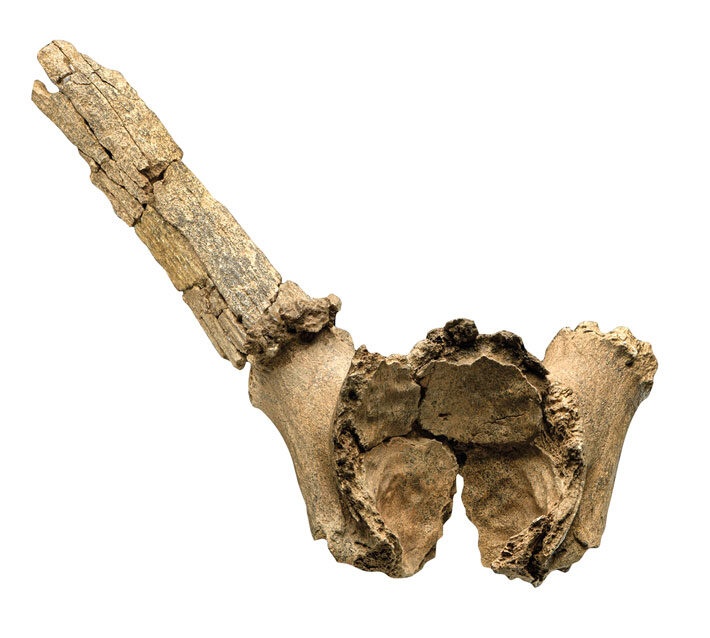
The team's analysis of the grave goods further showed that the shaman was connected to a wider community. The flints they found in the block were fashioned from more than 10 different rock sources, some located more than 50 miles away. "What goes in the grave is about how highly regarded she was and how big her community was," Jöris says. "There were probably people who came from a long distance away for her burial."
During the reexcavation of the shaman's grave, the team also turned their attention to the area surrounding the burial. As part of preparations for planting trees for the garden show, researchers dug dozens of test holes, but unearthed no other bones or Mesolithic artifacts. Barely three feet away from the location of the shaman's carefully arranged grave, however, they did uncover another small pit containing a pair of red deer antler headdresses. Both headdresses were pointed toward the shaman's grave, a position scholars believe is unlikely to have been accidental.
The fact that an offering had been made to the departed shaman came as no surprise. But radiocarbon dates the team gathered in 2022 indicate that these gifts are around 600 years younger than the woman's grave, meaning they were placed there more than 20 generations after her death. This antler offering was made around 8,400 years ago and coincided with a dramatic cold spell in prehistoric Europe. Perhaps, Meller says, later shamans called on their distant ancestor for help in troubled times.
That a preliterate society may have preserved not only the woman's memory but also recalled the precise location of her grave for so long is a display of sophistication not usually associated with hunter-gatherers. Meller believes that the idea that Mesolithic peoples lacked social complexity does these cultures a great disservice. The impressive level of attention to her grave, in her own time as well as centuries later, speaks to the significance of the shaman herself. "She was so charismatic and powerful," Meller says, "that people were still talking about this woman six centuries after she died." With a book on the team's research published last year and plans for an updated exhibition in the museum in the works, people are talking about her nearly 10,000 years later, too.
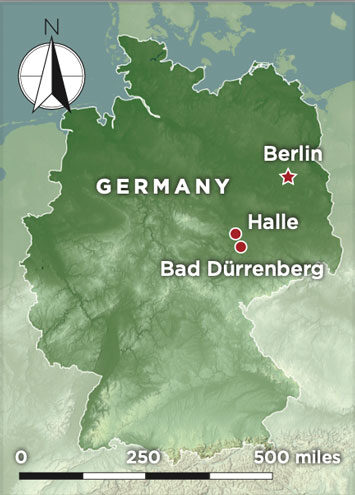



Comment: See also: